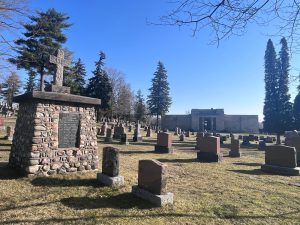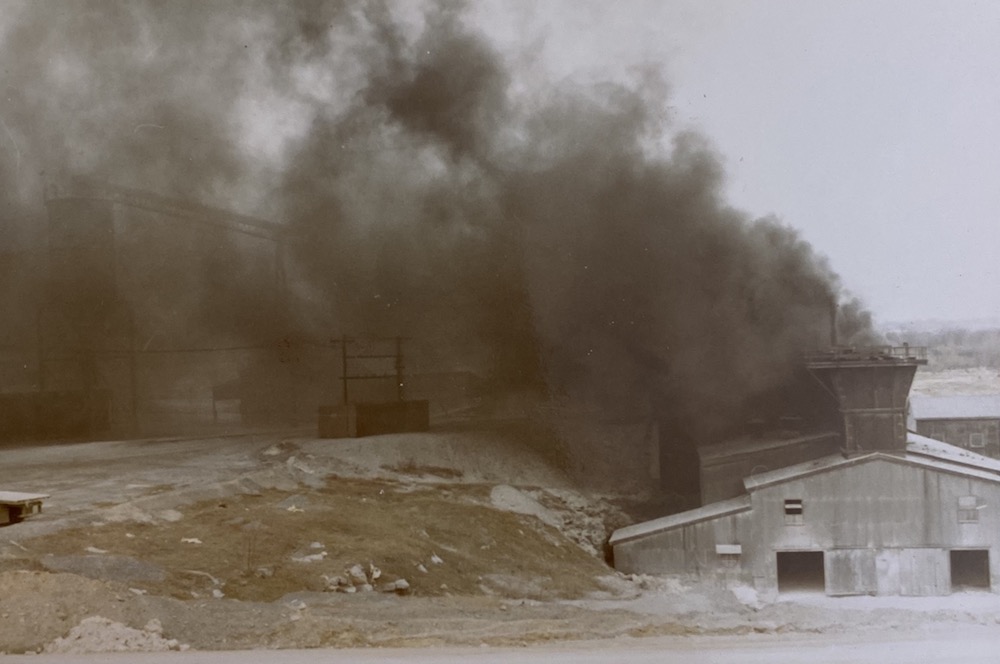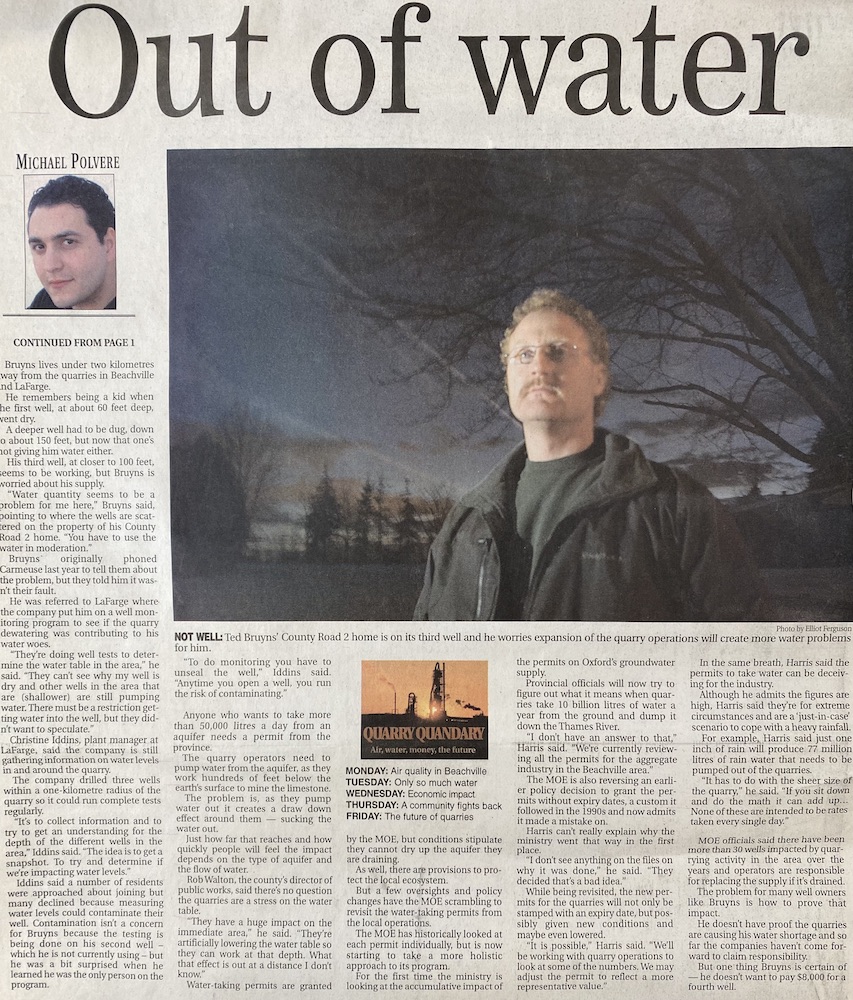Community Concerns
Every plant in the Limestone Valley saw improved productivity through the latter half of the 20th century. More blasts went off through the week. More kilns were burning stone around the clock, and more trucks were hauling stone to and from the quarries on local roads. Disputes about flying rocks, dust clouds, and water usage arose and were reported in the news and discussed in public meetings.
“Watch Out” For Flying Rocks
Over 7 years, when Global Stone took over the former Innerkip Lime site, blasting operations edged closer to the local cemetery. The media warned people who would visit the graves of loved ones to watch out for “flying stone.” The cemetery caretaker, members of the cemetery board, and neighbours of the site reported large pieces of rock hitting their vehicles and landing on their properties. To resolve conflict, managers of the quarries and the cemetery struck an agreement “under which the quarry w[ould] not blast during funerals.” Quarry managers investigated the fallout and reworked their plans with their explosives experts and blasting consultants.
Breathing Clear
In 1978, Beachville residents charged the Ontario government with ignoring complaints to the ministry over rising dust levels near the quarries. Where limestone particles become airborne, they are linked to heart problems and respiratory diseases. Air quality monitors were set up in Beachville in the 1980s. An initial report concluded that all 3 quarries, at the time, were contributors to high dust levels and would be responsible for further measures to protect air quality.
“They Drained Me” – Protecting The Local Water Supply
Through the 1970s, property owners around the quarry insisted that blasting could endanger private wells and the local aquifers that fed them. In 2007, additional worries about the water supply were voiced when a quarry applied for water-taking permits that would allow it to pull 272 million litres per day from groundwater sources. Residents argued the quarries had too much access to local water supplies and that their wells were drying up. The quarry indicated using water to cool equipment and control dust emissions. Then, they carefully let the water settle and returned it to the Thames River according to a sound environmental policy.
The communities around Beachville continue adapting to their industrial neighbours just as the quarries strive to develop more sustainable practices.




